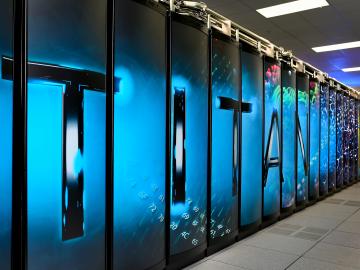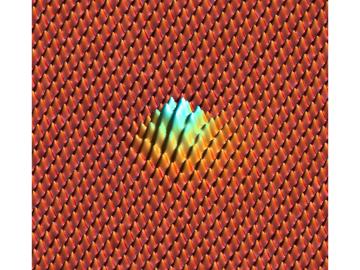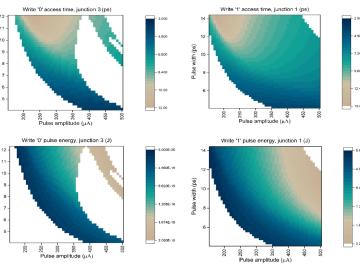Filter News
Area of Research
- Advanced Manufacturing (10)
- Biological Systems (3)
- Biology and Environment (11)
- Building Technologies (1)
- Clean Energy (101)
- Climate and Environmental Systems (3)
- Computational Engineering (1)
- Computer Science (8)
- Data (1)
- Fossil Energy (1)
- Fusion Energy (6)
- Isotope Development and Production (1)
- Materials (76)
- National Security (5)
- Neutron Science (40)
- Nuclear Science and Technology (17)
- Quantum information Science (3)
- Sensors and Controls (1)
- Supercomputing (48)
- Transportation Systems (2)
News Type
Date
News Topics
- 3-D Printing/Advanced Manufacturing (16)
- Advanced Reactors (7)
- Artificial Intelligence (13)
- Big Data (9)
- Bioenergy (11)
- Biology (1)
- Biomedical (5)
- Biotechnology (1)
- Clean Water (5)
- Composites (3)
- Computer Science (41)
- Cybersecurity (7)
- Energy Storage (9)
- Environment (23)
- Exascale Computing (3)
- Frontier (2)
- Fusion (6)
- Grid (5)
- Isotopes (1)
- Machine Learning (5)
- Materials Science (22)
- Mercury (2)
- Microscopy (6)
- Molten Salt (1)
- Nanotechnology (6)
- Neutron Science (20)
- Nuclear Energy (17)
- Physics (8)
- Polymers (2)
- Quantum Science (10)
- Security (2)
- Space Exploration (4)
- Summit (9)
- Sustainable Energy (8)
- Transportation (14)
Media Contacts

From machine learning to neuromorphic architectures that enable greater computing flexibility and utility, Oak Ridge National Laboratory researchers are pushing boundaries with Titan. “We’re using deep learning to advance the state of the art in several challenging fields such as c...

Researchers at Oak Ridge National Laboratory found a simpler way to measure adhesion between graphene sheets, compared to a sophisticated method used in a 2015 study: They measured how much graphene deflects when neon atoms poke it from below to create “bubbles.” Each bubble’s curv...


Ceramic matrix composite (CMC) materials are made of coated ceramic fibers surrounded by a ceramic matrix. They are tough, lightweight and capable of withstanding temperatures 300–400 degrees F hotter than metal alloys can endure. If certain components were made with CMCs instead o...




